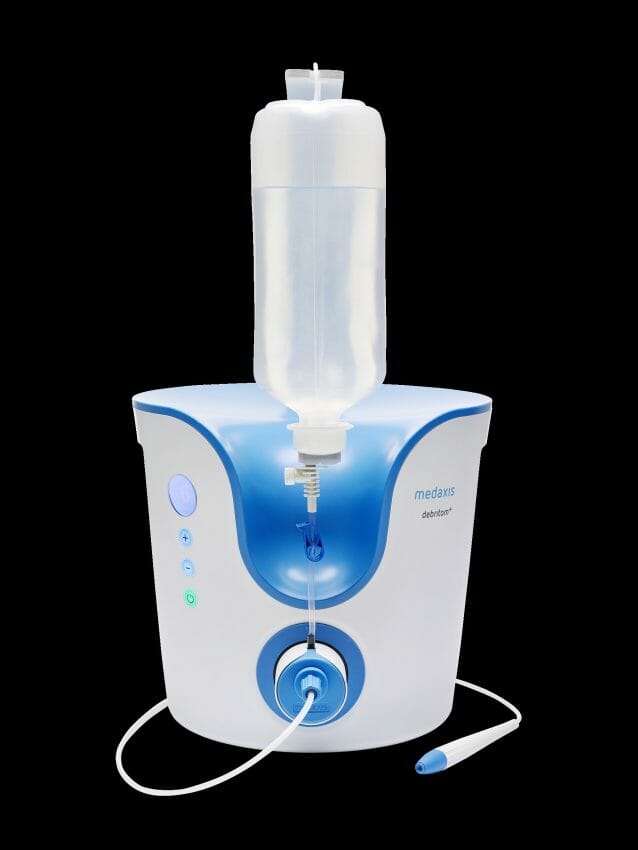debritom+ by Medaxis: Non-healing diabetic foot wounds are increasing in prevalence, and create a higher risk for infection, osteomyelitis and amputation. To facilitate appropriate wound healing processes, proper debridement of the wound bed is critical to remove non-viable tissue and bacterial biofilm.
Traditional debridement methods involve the use of a sharp blade, a method that often results in the removal of healthy, viable tissue and pain for the patient. In contrast, the Swiss wound care company, Medaxis has developed the debritom+ to precisely clean acute and chronic wounds in a tissue-preserving manner.
By using Micro Water Jet technology, the debritom+ removes the unhealthy tissue such as fibrin, necrosis, and biofilm efficiently while performing a precise mechanical cleaning and stimulation of the wound base to enhance granulation and healing.
Results from the interim analysis of a Multicenter Randomized Control Trial (NCT04564443) that has been accepted for presentation this week at the American Diabetes Association annual meeting in New Orleans, showed that weekly debridement using the debritom+ nearly doubled the rate of wound healing from 40% to 72% compared to the use of traditional methods. Also shown was a significant improvement in wound size reduction (87% versus 35%), while also reducing the frequency of infections and complications.
Study Chair, Professor David Armstrong DPM MD PhD of Keck School of Medicine of University of Southern California noted “The early data suggests great promise that better debridement tools can improve wound closure and decrease diabetic foot related complications and infections. This study supports that improved debridement methods, combined with good quality dressings and offloading, is beneficial and possibly synergistic to achieve wound healing in non-healing diabetic foot ulcers.”
“To initiate wound healing, a quality debridement is key to success. In contrast to traditional debridement methods that remove both the non-viable and healthy tissue, the debritom+ by Medaxis removes only the non-viable tissue while preserving the healthy tissue underneath. By creating microbleeding and providing the oxygenation to the wound that is necessary for starting the healing process, the debritom+ has now been proven to initiate healing in nearly twice as many wounds as with traditional methods with six-times fewer infections and complications” stated Dr. Mark Cregan, Managing Director of Medaxis USA.
Beat Moser, CEO of Medaxis said “These results validate the design philosophy of the Medaxis debritom+. The use of our patented Micro Water Jet Technology has now been proven to significantly improve wound healing outcomes. I have always believed that clean wounds heal better, and now we have the hard evidence.”
